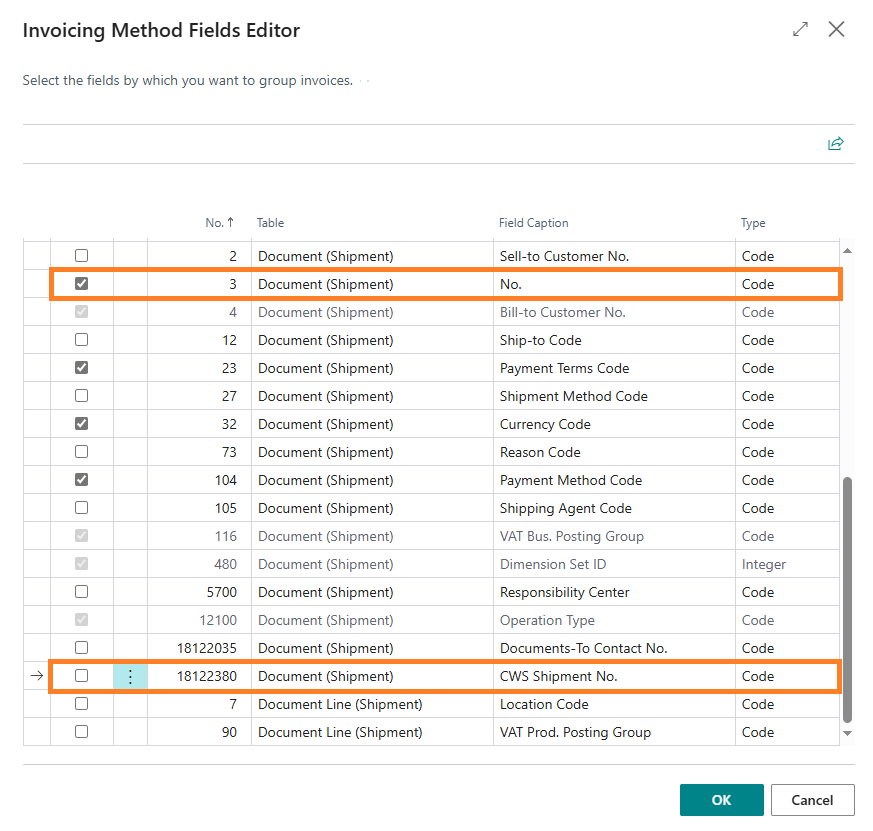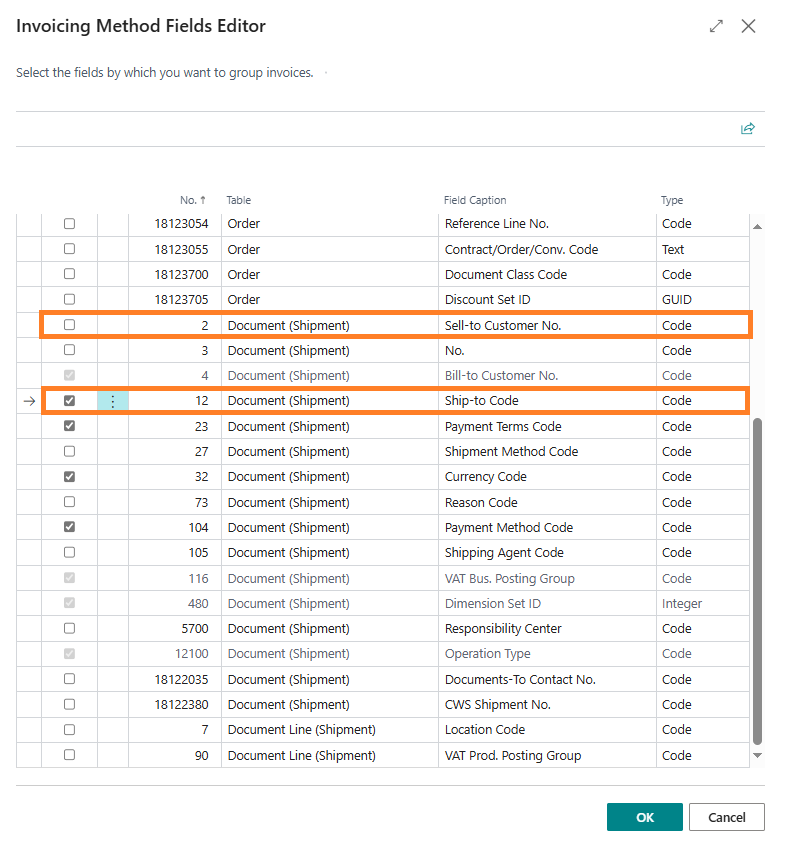Sommario
- Example 1: one invoice for each shipment (with active CWS shipments)
- Example 2: one invoice per destination (using ship to:)
- Example 3: monthly consolidation of multiple sales shipments into the same sales invoice
- Example 4: generation of an invoice for each reason code:
- Reason code VEN: standard
- Reason code NO_MAG: does not affect warehouse stock
Example 1: generate an invoice for each shipment
Premise: In the case of using an invoicing method that requires a split for each individual shipment (1 shipment → 1 Invoice), it is necessary to first verify whether CWS shipments or registered sales shipments will be used at the project level. This is because the splitting criterion configurable in the field editor will differ and must be set as follows:
- CWS Shipments: Set the flag to TRUE for the field “CWS Shipment No.”
- Registered Sales Shipments: Set the flag to TRUE for the field “No.”
This is because a single CWS shipment may group multiple registered sales shipments.

In this case, in the invoicing report, we will include the billing method code filter: 1SHIP1INV, associated with all customers for whom the issuance of one invoice per individual shipment with a 1:1 criterion is planned.

N separate sales invoices are generated, containing the various shipments made.

Esempio 2: una fattura per destinazione (spedire a:)
Premise: Typically, in destination-based invoicing, it is necessary to first verify the project logic used to set up destinations/delivery points in the customer master data.
Usually, the “shipping addresses” master data is used. However, in some cases, particularly in the retail sector, due to pricing or promotional logic specific to delivery points, a structure is chosen that uses the “Sell-to Customer” master data associated with a single billing customer “Bill-to Customer,” corresponding to the parent company. In this case, the splitting criterion “Sell-to Customer No.” must be flagged to generate one invoice per delivery point.

In this case, in the invoicing report, we will include the billing method code filter: MENS-DEST, which provides a split by “Ship-to Address.”

In this example, two invoices have been generated containing:
- First Invoice: 2 Shipments with destination VITERBO
- Second Invoice: 1 Shipment with destination ROME

Esempio 3: cumulazione mensile di più DDT nella stessa fattura di vendita
Premise: In cumulative invoicing of multiple shipments into a single sales invoice, which is typically generated at the end of the month, it is advisable to establish with the customer any splitting criteria that must be mandatory regardless of the invoice aggregation.
For example: if it is permissible to modify the payment method and/or terms at the sales order level, during cumulative invoicing, this variation must be considered. Consequently, two separate invoices with different methods and terms should be generated.
The recommendation is to always set these two splitting criteria for payment terms and payment method in every invoicing method.

In this case, in the invoicing report, we will include the billing method code filter: MENS, which provides for monthly cumulative invoicing. In this scenario, the “reference date” will be set to the end of the month:

In this example, a single monthly sales invoice was generated containing all the customer Rotadent ingranaggi’s shipments for the month

Esempio 4: generazione di una fattura per ogni causale
Premise: In the event that we need to divide the generation of sales invoices based on the reason used in the sales order, it is possible to do so by checking the field: “Reason code”.

In this case, in the invoicing report, we will insert the billing method code: REASON into the customer filter.

Two sales invoices have been generated with different reasons derived from the sales order, in the example: VENDITA and NOMAG.

Feedback
Was this page helpful?
Glad to hear it! Please tell us how we can improve.
Sorry to hear that. Please tell us how we can improve.